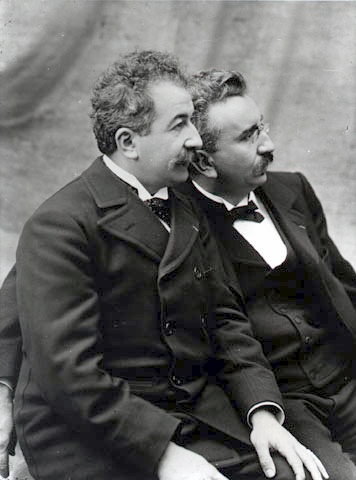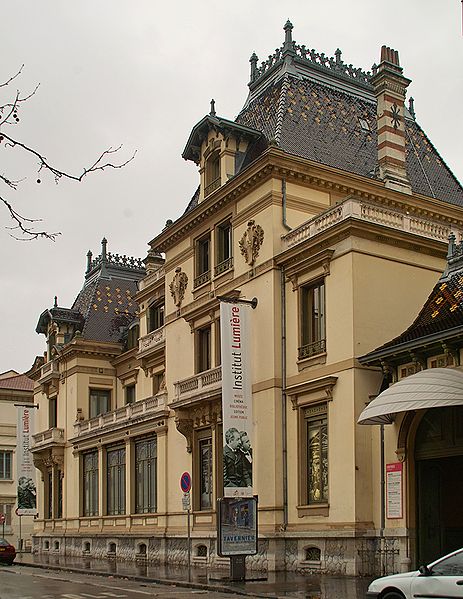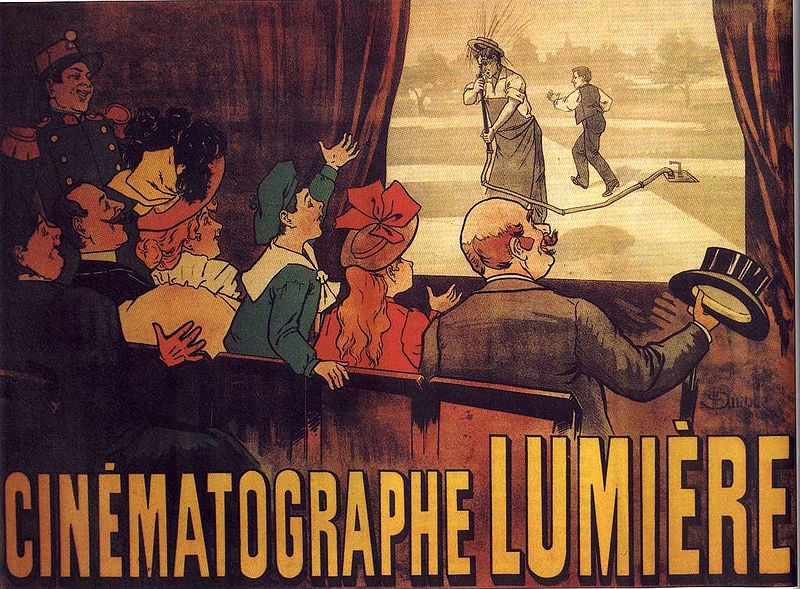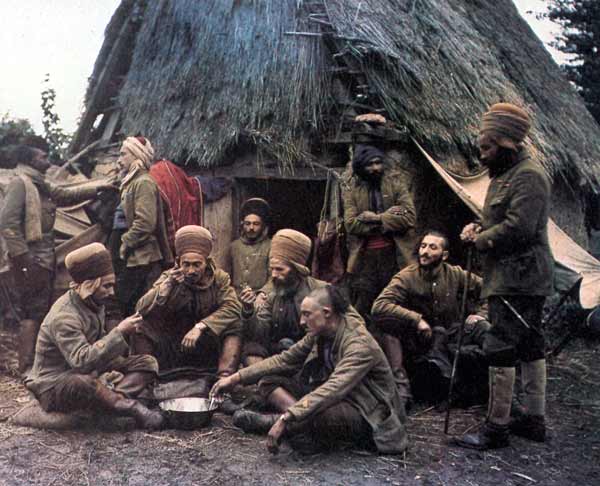<Back to Index>
- Philosopher Marsilio Ficino, 1433
- Pioneer Filmmakers Auguste Marie Louis Nicolas et Louis Jean Lumière, 1862 1864
- Empress of Korea Myeongseong, 1851
PAGE SPONSOR


The Lumière brothers, Auguste Marie Louis Nicolas (19 October 1862, Besançon, France – 10 April 1954, Lyon) and Louis Jean (5 October 1864, Besançon, France – 6 June 1948, Bandol), were among the earliest filmmakers in history. (Appropriately, "lumière" translates as "light" in English.)
The Lumière brothers were born in Besançon, France, in 1862 and 1864, and moved to Lyon in 1870, where both attended La Martiniere, the largest technical school in Lyon. Their father, Claude-Antoine Lumière (1840–1911), ran a photographic firm and both brothers worked for him: Louis as a physicist and Auguste as a manager. Louis had made some improvements to the still-photograph process, the most notable being the dry-plate process, which was a major step towards moving images.
It
was not until their father retired in 1892 that the brothers began to
create moving pictures. They patented a number of significant processes
leading up to their film camera - most notably film perforations (originally implemented by Emile Reynaud) as a means of advancing the film through the camera and projector. The cinématographe itself
was patented on 13 February 1895 and the first footage ever to be
recorded using it was recorded on March 19 1895. This first film shows
workers leaving the Lumière factory. The Lumières held their first private screening of projected motion pictures in 1895. Their first public screening of films at which admission was charged was held on December 28, 1895, at Salon Indien du Grand Café in Paris. This history-making presentation featured ten short films, including their first film, Sortie des Usines Lumière à Lyon (Workers Leaving the Lumière Factory). Each film is 17 meters long, which, when hand cranked through a projector, runs approximately 50 seconds. It is believed their first film was actually recorded that same year (1895) with Léon Bouly's cinématographe device,
which was patented the previous year. The cinématographe — a
three-in-one device that could record, develop, and project motion pictures — was further developed by the Lumières. The
public debut at the Grand Café came a few months later and
consisted of the following ten short films (in order of presentation): The Lumières went on tour with the cinématographe in 1896 - visiting Bombay, London, New York and Buenos Aires. The moving images had an immediate and significant influence on popular culture with L'Arrivée d'un Train en Gare de la Ciotat (literally, "the arrival of a train at La Ciotat Station", but more commonly known as Arrival of a Train at a Station) and Carmaux, défournage du coke (Drawing out the coke). Their actuality films, or actualités, are often cited as the first, primitive documentaries. They also made the first steps towards comedy film with the slapstick of L'Arroseur Arrosé.
The brothers stated that "the cinema is an invention without any future" and declined to sell their camera to other filmmakers such as Georges Méliès.
Consequently, their role in the history of film was exceedingly brief.
They turned their attentions to colour photography and in 1903 they
patented a colour photography process, the "Autochrome Lumière",
launched on the market in 1907. Throughout much of the 20th century,
the Lumière company was a major producer of photographic
products in Europe, but the brand name, Lumière, disappeared
from the marketplace following its merger with Ilford.
The Lumières also developed other products such as a
loudspeaker, "Lumière tulle gras" (a dressing to heal burns) and
the homonoid forceps (a medical tool). The Lumière Brothers were not the only ones to claim the title of the first cinematographers. The scientific chronophotography devices developed by Eadweard Muybridge, Etienne-Jules Marey and Ottomar Anschütz in the 1880s were able to produce moving photographs, as was Thomas Edison's Kinetoscope, premiered in 1891. Since 1892, the projected drawings of Émile Reynaud's Théâtre Optique were attracting Paris crowds to the Museé Grevin. Louis Le Prince had been shooting moving picture sequences on paper film as soon as 1888, but had never performed a public demonstration. Max and Emil Skladanowsky, inventors of the Bioskope, had offered projected moving images to a paying public one month earlier (November 1, 1895, in Berlin). Nevertheless, film historians consider the Grand Café screening
to be the true birth of the cinema as a commercial medium, because the
Skladanowsky brothers' screening used an extremely impractical dual
system motion picture projector that was immediately supplanted by the
Lumiere cinematographe. Although
the Lumière brothers were not the first inventors to develop
techniques to create motion pictures, they are often credited as one of
the first inventors of Cinema as a mass medium, and are among the first
who understood how to use it. By comparison, it is argued that Thomas
Edison may have meant his invention as a game or distraction for rich
people, not as a movie to be seen in public.

